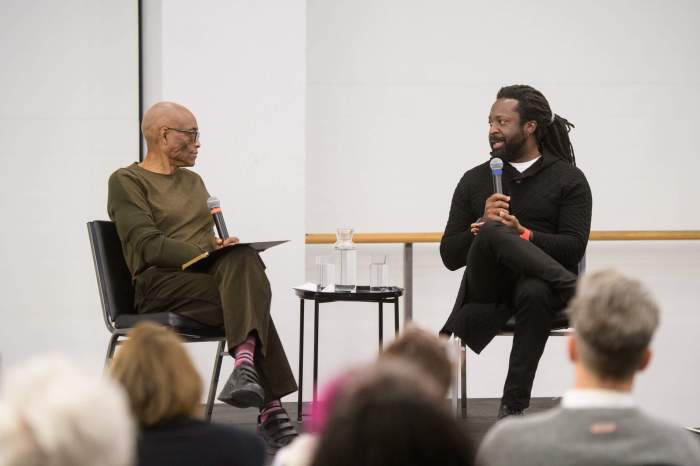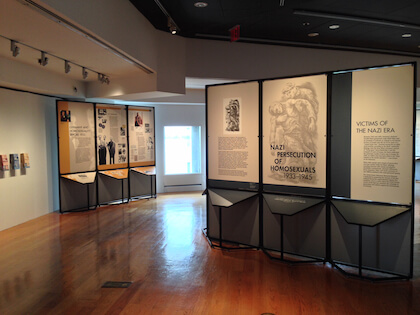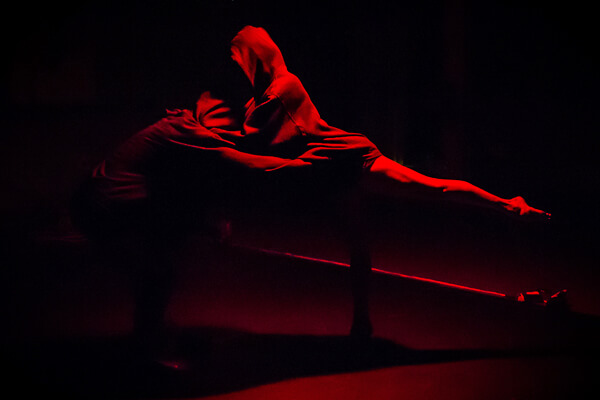Like the apex of a dancer’s leap, each action we take has its moment in time, then becomes subject to interpretation — by those we share our stories with, and by ourselves, as the decades accumulate and perspective evolves.
Twelve years ago, prolific choreographer Bill T. Jones (with a MacArthur Genius Fellowship in the rearview mirror and a Tony Award in his future) began contemplating legacy — not his own, but that of his French-Jewish mother-in-law, Dora Amelan. Now 95, she sat down for a series of interviews with Jones, the man she has come to regard as her third son.
These reflections would chronicle Dora’s early years in Belgium through the time of her mother’s death, as the Germans were marching into that country — then proceed to her time spent assisting the underground arm of OSE (Organization for Saving the Children), as a nurse and social worker operating inside France’s Gurs and Rivesaltes internment camps.
Premiered by the New York Live Arts-based Bill T. Jones/ Arnie Zane Dance Company this past June as part of Montclair State University’s Peak Performances series, “Analogy/Dora: Tramontane” is comprised of 25 vignettes that blend dance, dialogue, and singing, as performed by a multiracial, multicultural ensemble.
On November 4, the Museum of Jewish Heritage will host an evening of video performance excerpts, discussion, and questions from the audience. Moderated by Julie Burstein (author of “Spark: How Creativity Works”), the event will provide a firsthand look at the project’s themes, backstory, and creative process. Appearing on the stage of Edmond J. Safra Hall will be Jones, Dora Amelan and her son, Bjorn Amelan (Jones’ husband and longtime collaborator, he designed the flats for “Analogy/Dora,” which move in accordance with shifts in location and perspective).
Part one of a trilogy, its self-contained narrative will be bookended by 2017’s “Analogy/ Ambrose: The Emigrants” (inspired by a story within author W.G. Sebald’s 1992 collection). The middle installment, “Analogy /Lance: Pretty aka The Escape Artist,” is set to premiere on July 1, 2016, at the American Dance Festival in Durham, North Carolina. Based on an oral history conducted in a similar manner to the “Dora” project, it draws upon the life of Jones’ nephew, a dancer, during a tumultuous period in 1970s San Francisco.
“They all have a strong connection to war,” said New York Live Arts spokesperson Kyle Maude of the trilogy, in an October 26 phone interview conducted as she was en route to pick up her mother at the airport. Due to give birth any day at that point (baby August has since arrived, healthy and adorable), Maude noted that all of the “Analogy” works explore variations of “a war happening in the world… how each person is affected by that, and how they deal with it on the inside.”
Later that same day, as Maude was anticipating the arrival of a new life, Jones also spoke with this reporter, while on the way to address a family concern of his own. Lance, currently living in Florida, is “in recovery after having lost the use of his lower limbs due to certain medical circumstances not quite understood,” according to a press statement.
Absorbing both of these events, and the willingness of Maude and Jones to make themselves available in the midst of such upheaval, puts one in mind of the “Dora” project’s imperative to layer the past, present, and future, along with its function as a way to preserve the experiences of a rapidly disappearing generation for the benefit of generations to come.
“Dora is much more fragile than when we did the oral histories. Any day could be her last,” said Jones, who regards the November 4 event — indeed, any time spent with his mother-in-law — as “something very precarious; us sitting on that stage and talking. It’s very urgent that I don’t take any day for granted with her. She’s very much alive right now, so this is a privilege.”
This upcoming conversation, like the work it references, functions in part to contemporize Dora’s wartime experiences.
“From the very beginning, the piece [“Analogy/Dora”] was conceived to not be totally backward-looking,” said Jones, who wanted his performers “to feel the questions they had in their youth reflected in a time 60 to 70 years prior,” when Dora was in her late teens and early 20.
Rather than asking them to fully comprehend the external conditions of that era or interpret the internal process of “a woman whose first language is French, who speaks Hebrew and German when you sit with her,” the source material arrived with the expectation that it would be “interpreted through their basic knowledge, instincts, and skills. They are the contemporary world,” said Jones, whose “gender partitioned” casting has men asking the questions he once posed, and women giving voice to Dora’s responses.
“They’re not trying to imitate Dora. That’s why they are themselves,” noted Jones, who counts among his ensemble “a young woman from Taiwan, an African-American woman, and a white woman. Their very bodies represent what is meant when you ‘read the stage.’ To look at them, there is a kind of dissonance when you realize the story being told is from the 1940s.”
Although firmly set in the past, Jones emphasized that “Analogy/ Dora” was not created to simply preserve that era, or serve only those interested in exploring it. “What we’re making is not [just] about the Holocaust. It’s about making theater with the people you have now.”
Nor is it simply about the word-for-word interviews, he asserted. A book could do that just, if not more, effectively. Instead, on the stage, “There’s a system at work,” said Jones, which articulates itself in “the way we handle the flats, the repetition of certain tableaus. When you ask yourself what is being said, it’s almost like the question of right and wrong [that Dora asks, when responding to a question about the difference between cooperation and collaboration]. Is it shifting? Is it lucid? Will it change in your memory over time?”
As for how time will impact the “Dora” project, Jones noted that for artists (in general, and certainly specific to himself), “there is a tendency to collect experiences from the world, make your work, and move on. This work, because of how it has landed in the hearts and minds of people, it is not so clear as to what its future will be.”
ANALOGY/ DORA: TRAMONTANE | Museum of Jewish Heritage — A Living Memorial to the Holocaust, Edmond J. Safra Plaza, 36 Battery Pl. at First Pl., Battery Park City | Nov. 4, 7 p.m. | $15, $10 for members, $5 for students with valid ID at mjhnyc.org o 646-437-4202 | Information on Jones and his company at newyorklivearts.org




































